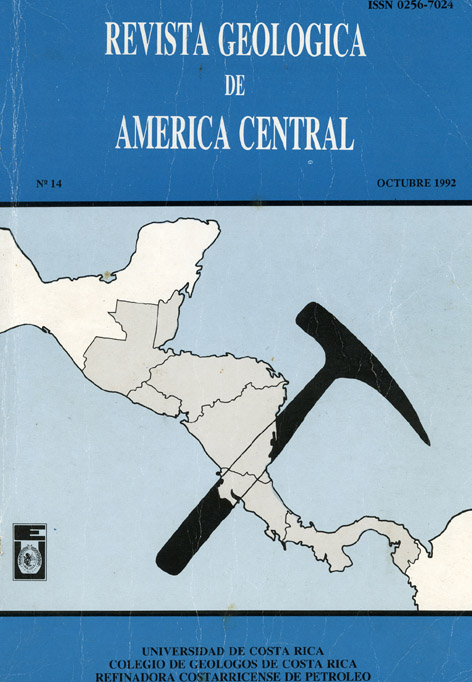Abstract
The Golfo Dulce goldfield has been mined since pre-Colombian times and during the 1980's produced at least twice as much gold as the entire Tilarán-Aguacate Gold Province in northern Costa Rica. The gold occurs in eluvial-colluvial placers overlying the Nicoya Complex basement (Late Cretaceous to early Tertiary), as alluvial placers in the unconformably overlying basal conglomerates of the Osa Group (late Pliocene) and inthe gravels of Puerto Jiménez Group (late Pleistocene-Holocene).
Studies of the geographic and stratigraphic distribution of the placer gold, its habit and composition, and the associated heavy mineral suite, demonstrate conclusively that the "source beds" form part of the underlying Nicoya Complex that is an obducted segment of ophiolitic oceanic crust characterized by E-MORB-type basalts enriched in large-ion-lithophile (LIL) elements typical of a back-arc basin setting analogous to the Mariana Trough. The gold was initially concentrated in epithermal auriferous quartz lodes in the basalts, and in interlayered pelagic sediments, by hot circulating fluids (seawater and magmatic fluids) related to one or more of the three submarine volcanic vents, of Late Cretaceous to Early Tertiary age. Translative plate movement and subsequence obdution and isostatic uplift of this segment of oceanic crust during development of the Southern Central America Orogen allowed wathering and erosion of the ophiolite complex. This produced gold in solution and native gold that was concetrated during several cycles as eluvial-colluvial-alluvial placers in the late Tertiary and Quaternary sediments derived from the Nicoya Complex.
The primary gold deposits of the Southern Central America Orogen appear to include two distinct types and occur as (i) epithermal Au-Ag +/- (Pb-Zn-Cu) quartz veins, stockworks and disseminated deposits of late Tertiary age, associated with calc-alkaline acid-intermiadiate intrusives and/or volcanics in the inner-arc; or (ii) as epithermal low-Ag deposits in ophiolite terrains of the fore-arc. These originated by hidrothermal activity related to submarine basaltic volcanism, probably in a extensional enviroment such as a back-arc basin, and are significantly older-Late Cretaceous to early Tertiary.
Placer and/or hardrock gold is mined at numerous sites in the ophiolitic terrains of Costa Rica and Panamá, and maybe in the Serranía de Baudó of Colombia; and the Golfo Dulce Placer Province is considered to be the most westerly occurence of an "ophiolitic gold province". The recognition that virtually uncratonized oceanic crust in this region forms the "source-beds" for gold deposits, suggests that similar ophiolitic terrains in the circum-Pacific and Caribbean should be regarded as gold exploration targets.






